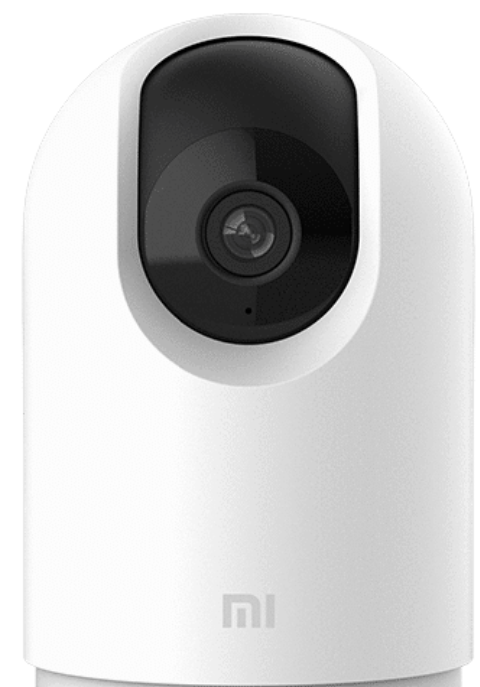Why Every Electrician Should Use Wiring Diagram Software on Every Job
For decades, electricians have relied on paper plans, hand-drawn sketches, and verbal coordination to complete wiring jobs—from small residential installations to large-scale commercial projects. But in a world where buildings are becoming smarter, systems are more interconnected, and clients expect precision, speed, and documentation, traditional methods are falling short.
Today’s electricians face complex demands: structured cabling, energy-efficient layouts, integration with smart devices, and strict adherence to national electrical codes. As a result, wiring diagram software is no longer a luxury or an option—it’s a necessity.
Whether you’re a solo contractor, part of an electrical firm, or involved in AV or automation systems, using software to plan and document your wiring jobs brings huge advantages. In this article, we’ll explore why every electrician—no matter their level or focus—should use wiring diagram software on every job.
What Is Wiring Diagram Software?
Wiring diagram software is a digital tool that helps electricians, engineers, and integrators create precise electrical diagrams and schematics. These diagrams show how electrical systems are wired, including:
- Power circuits
- Control loops
- Low-voltage systems (AV, telecom, security)
- Smart automation and IoT networks
- Distribution boards and load centers
It replaces hand-drawn blueprints and static CAD sketches with dynamic, editable, and shareable diagrams that evolve with your project.
Many modern platforms also support:
- Code-compliance checks (NEC, IEC, etc.)
- Auto-routing of wires
- Bill of Materials (BOM) creation
- Cable schedules
- Cloud collaboration
- Real-time updates on mobile devices
Some of the most used wiring diagram software tools in 2025 include XTEN-AV, AutoCAD Electrical, SEE Electrical, QElectroTech, EdrawMax, and SmartDraw.
The Problems with Traditional Wiring Methods
Despite the availability of modern tools, many electricians still rely on outdated methods—often because of habit, lack of training, or the assumption that their jobs are “simple enough.”
But here’s the truth: even small wiring jobs are subject to the same risks and inefficiencies.
Common issues without software:
- Hand-drawn errors that lead to incorrect connections
- No version history when changes are made on-site
- Inability to easily share diagrams with inspectors or clients
- Miscommunication between team members or trades
- Lost or damaged paper plans
- Difficulty proving compliance during inspections
All of these can result in rework, project delays, failed inspections, safety risks—and worst of all, damage to your professional reputation.
10 Reasons Every Electrician Should Use Wiring Diagram Software
Let’s dive into the specific benefits of using wiring diagram software on every job, no matter the size or scope.
1. Increased Accuracy from the Start
Manual drawing increases the likelihood of errors—missing connections, incorrect wire types, or mislabeling terminals. With digital tools:
- Components snap into place automatically
- Wire paths follow logic and device rules
- Symbols are standardized and scalable
- Changes can be made without redrawing from scratch
This precision ensures your designs are accurate and reduces costly field corrections.
2. Code Compliance Is Easier to Manage
Many electricians struggle with remembering every detail of the NEC (National Electrical Code) or international standards. Good wiring diagram software will:
- Warn of code violations (e.g., wire gauge mismatches, overloaded breakers)
- Help with voltage drop calculations
- Recommend breaker sizing
- Offer templates pre-configured to meet common standards
Using software increases your confidence that your design will pass inspections the first time.
3. Streamlined Documentation and Permitting
Jurisdictions increasingly require digital submissions of wiring diagrams for permits or inspections. With diagram software, you can:
- Generate clean, labeled schematics
- Export in formats accepted by inspectors (PDF, DWG, DXF)
- Include cable schedules and BOMs
- Avoid last-minute redraws due to poor legibility
This not only speeds up approvals but makes your business look more professional.
4. Faster Project Planning and Bidding
When quoting or planning a job, diagrams are often needed to explain scope and estimate materials. Wiring diagram software can:
- Help visualize panel layouts and cable runs
- Automatically generate BOMs
- Reduce the time spent pricing cables, connectors, or devices
- Produce client-ready visuals for proposals
This gives you a competitive edge in bidding and helps prevent under-quoting.
5. Simplified Troubleshooting and Maintenance
Projects don’t end after installation. When a problem arises, the first thing people ask is, “Where’s the diagram?”
If you used wiring diagram software:
- Troubleshooting becomes faster and safer
- You can isolate circuits or devices by layer
- You won’t rely on memory or guesswork
- Diagrams can be pulled up instantly on tablets or phones
This is a game-changer for service calls and long-term client support.
6. Enhanced Team Collaboration
Wiring projects are rarely done alone. Designers, foremen, junior electricians, and subcontractors all play a role.
Using wiring diagram software enables:
- Real-time collaboration in the cloud
- Shared access across teams
- Role-based permissions for editing or commenting
- Version tracking so everyone stays updated
This eliminates miscommunication and ensures alignment across all stakeholders.
7. Compatibility with AV and Smart Building Systems
Today’s electricians often install or coordinate with:
- Smart lighting
- Access control
- Audio/Video systems
- Fire alarms and security panels
Many wiring diagram software platforms (like XTEN-AV) are designed to handle low-voltage systems, AV networks, and IoT layers on top of traditional electrical circuits. This unified approach ensures full-system integrity.
8. Easy Modification and Future Expansion
Let’s face it: clients change their minds. Buildings evolve. What you install today may be reconfigured tomorrow.
With software-based diagrams:
- You can easily update layouts
- Copy/paste and clone existing circuits
- Document changes for future teams
- Avoid repeating field surveys or rediscovering wire paths
This futureproofs your work and adds long-term value.
9. Mobile Access On-Site
Some tools offer mobile apps or cloud access, allowing you to:
- View diagrams on phones or tablets
- Mark up designs in the field
- Scan QR codes to access specific panels
- Upload photos or notes directly into the drawing
This reduces back-and-forth and allows decisions to be made on-site with confidence.
10. Competitive Advantage in a Crowded Market
Contractors that embrace digital workflows:
- Win more bids
- Work faster and safer
- Appear more professional
- Can handle larger and more complex jobs
Wiring diagram software isn’t just a tool—it’s a business strategy.
Real-World Example: Small Contractor, Big Benefits
Take “BrightSpark Electrical”, a three-person team doing residential and light commercial work in Austin, TX.
They adopted XTEN-AV’s free tier and started using it for basic layouts:
- Panel schedules
- Recessed lighting plans
- Network jacks and AV systems
In six months:
- They reduced inspection rejections by 80%
- Cut planning time from 6 hours to 2 per job
- Landed a school project because of their detailed submission package
For them, wiring diagram software turned from a “nice-to-have” to an “essential tool.”
Best Wiring Diagram Software Tools for Electricians in 2025
| Software | Strengths | Best For |
|---|---|---|
| XTEN-AV | AV + electrical integration, cloud, automation | AV contractors, hybrid system projects |
| AutoCAD Electrical | Industry-standard, scalable, full CAD suite | Engineers, industrial projects |
| SEE Electrical | Rule-based compliance, documentation | Municipal and infrastructure jobs |
| QElectroTech | Open-source, IEC/ANSI symbols | Budget users, small contractors |
| EdrawMax | Visual planning, easy templates | Residential, small commercial jobs |
| SmartDraw | Fast cloud diagrams, MS integration | Office wiring, hybrid AV layouts |
How to Get Started with Wiring Diagram Software
Here’s a simple path for electricians who are new to this:
- Choose a tool – Start with a free version (XTEN-AV, QElectroTech, EdrawMax).
- Watch tutorials – Many tools offer video walkthroughs and templates.
- Try a small job first – Practice with a single circuit or lighting zone.
- Get feedback – Show your diagrams to team members, clients, or inspectors.
- Scale up – Use it for more jobs and build your own library of symbols or templates.
Remember: the goal isn’t to become a CAD master overnight. It’s to save time, reduce errors, and work smarter.
Conclusion
Every wire you run, outlet you install, or panel you commission starts with a plan. Why settle for paper or guesswork when technology makes it easier, safer, and more professional?
Wiring diagram software empowers electricians to design with clarity, deliver with precision, and adapt with ease. Whether you’re wiring a single room or an entire smart building, these tools ensure your electrical vision is documented, compliant, and future-ready.
In 2025 and beyond, electricians who embrace software are not just staying current—they’re leading the charge.














1 comment